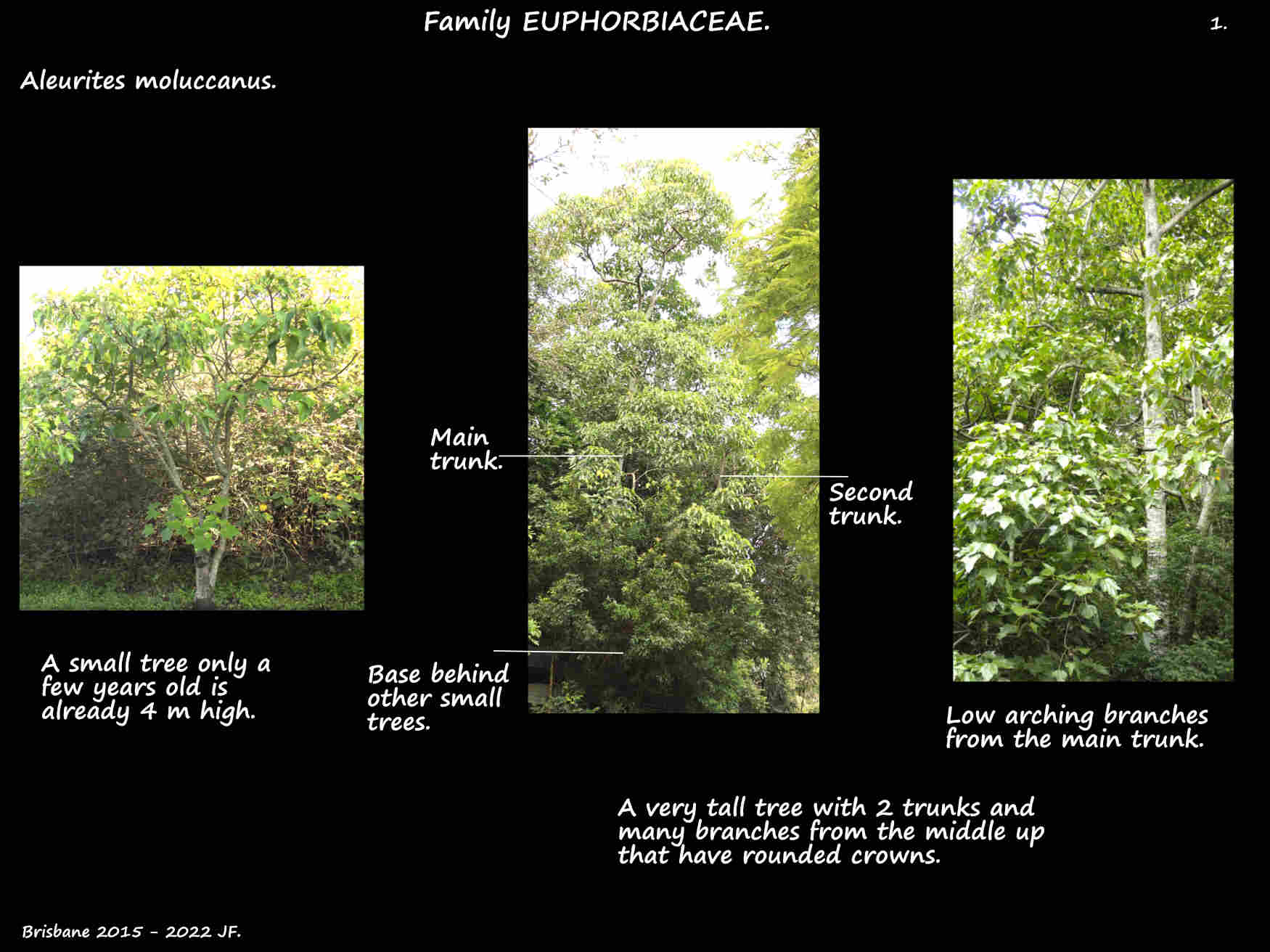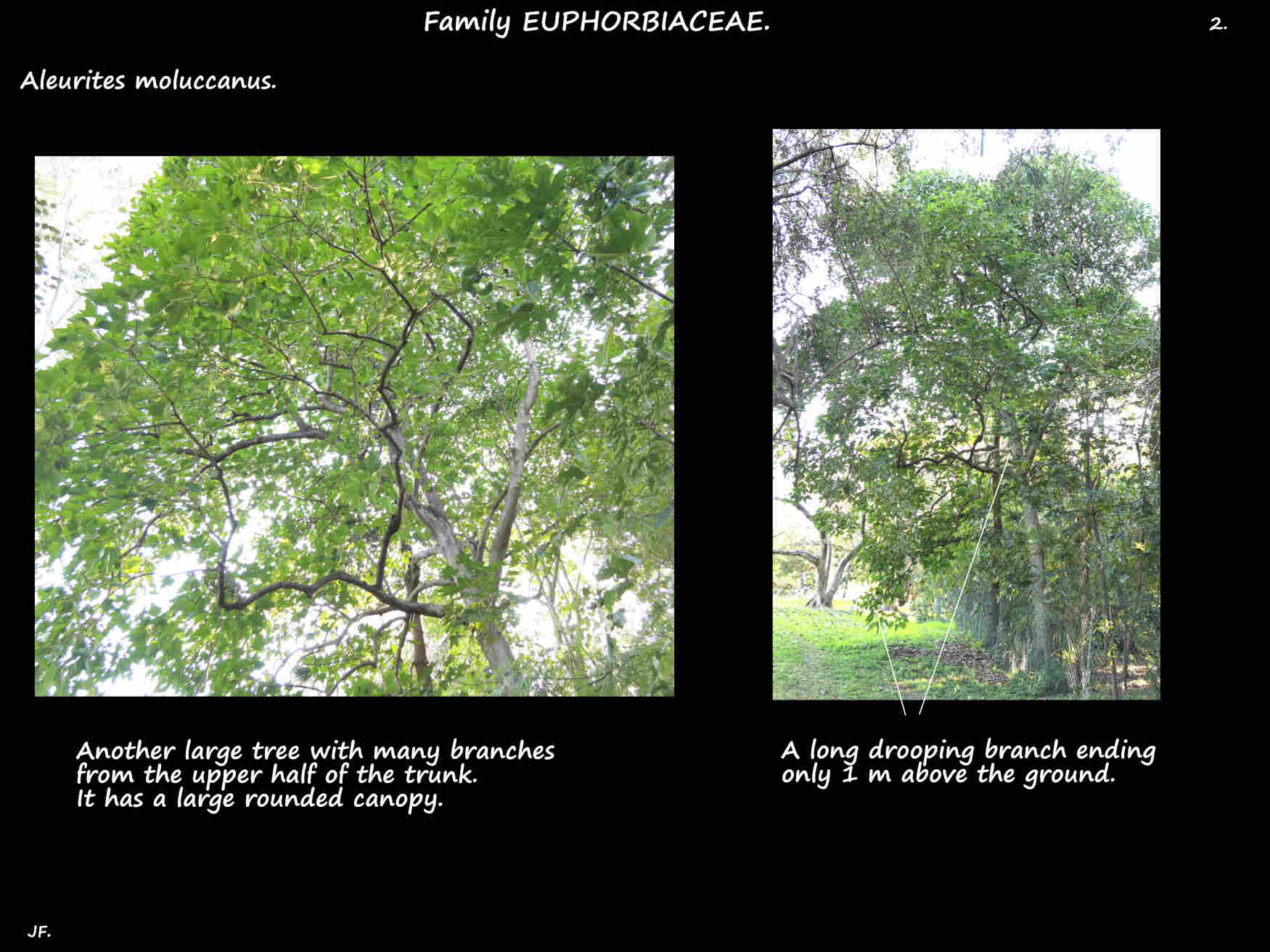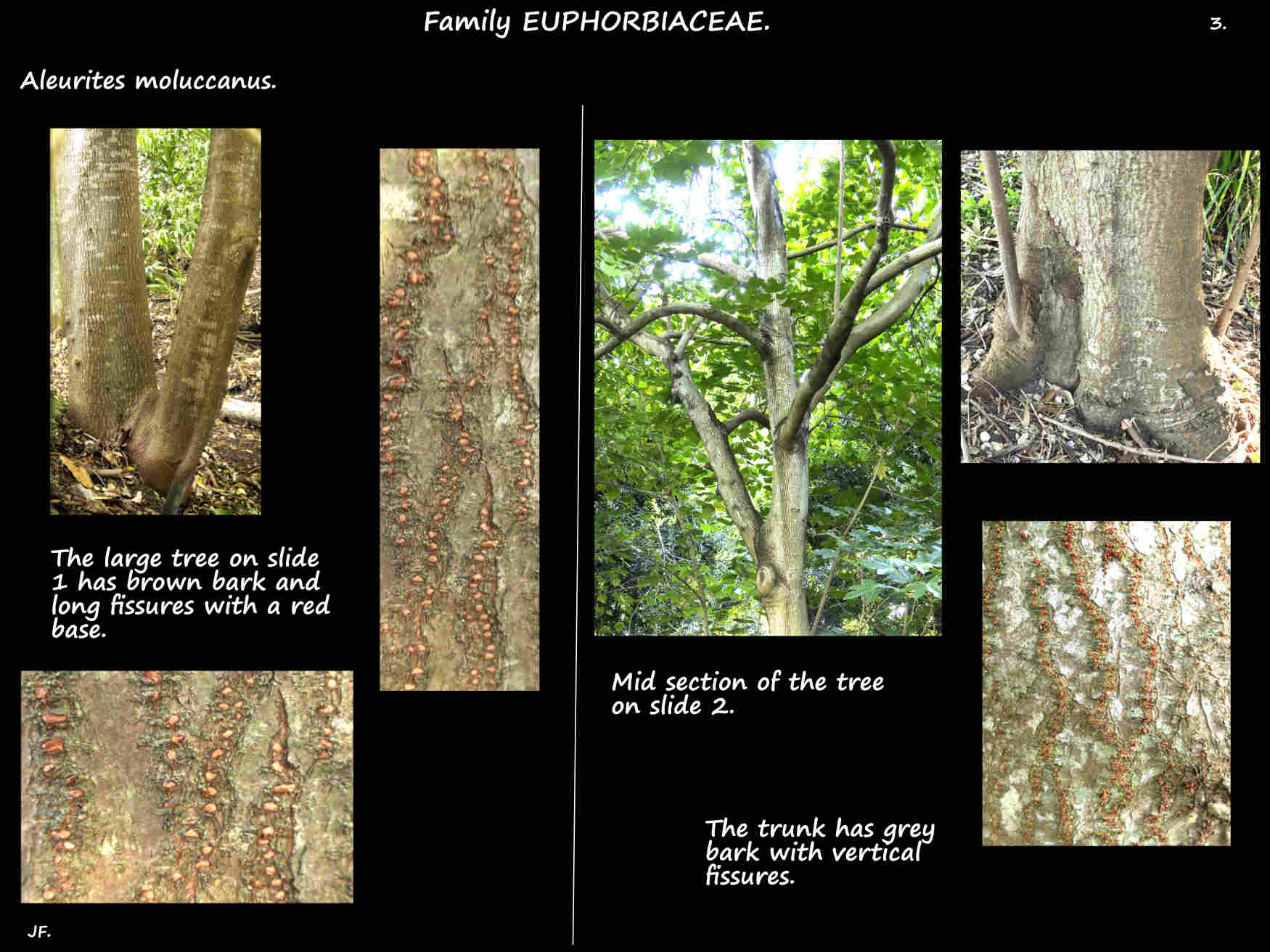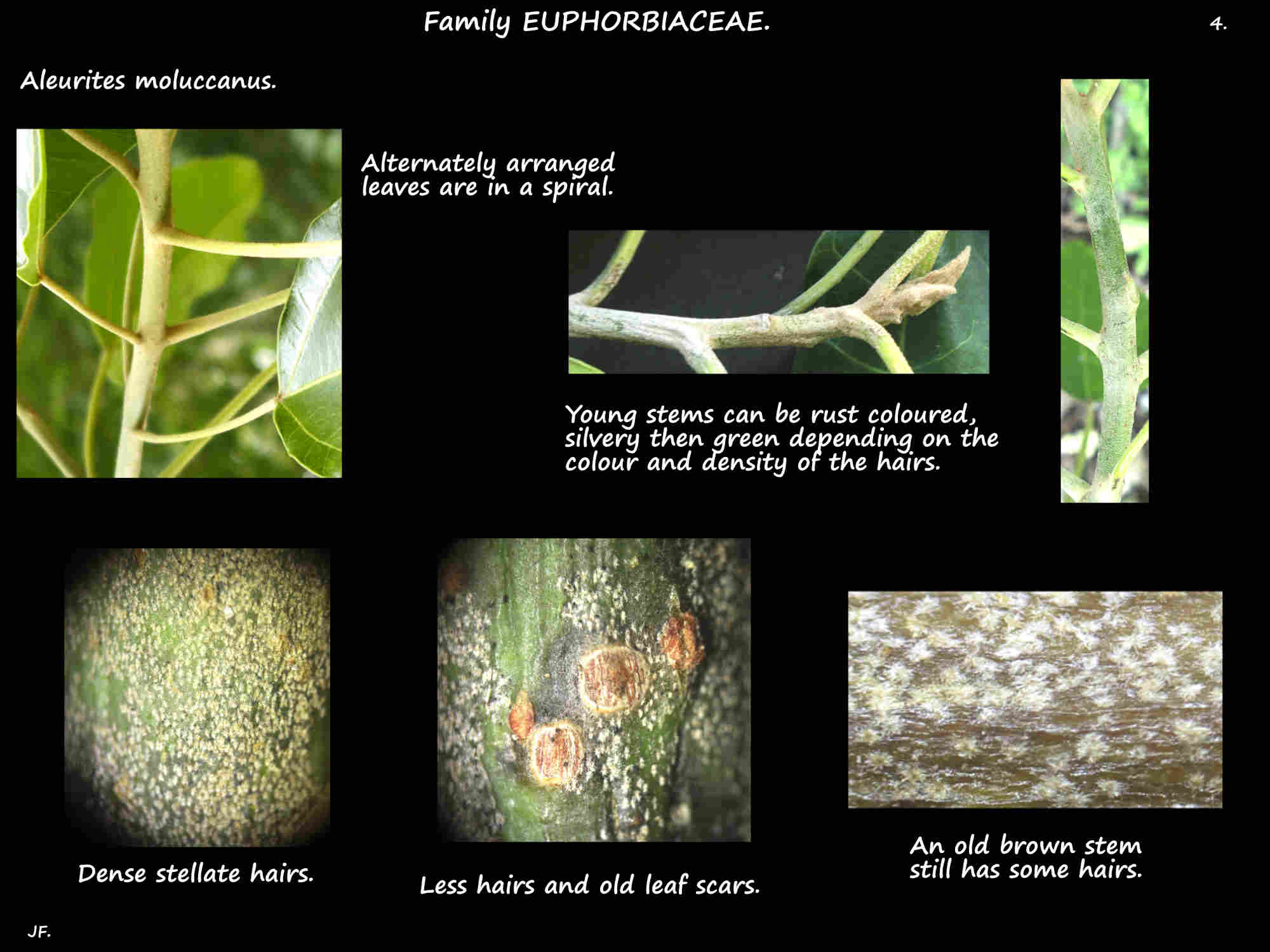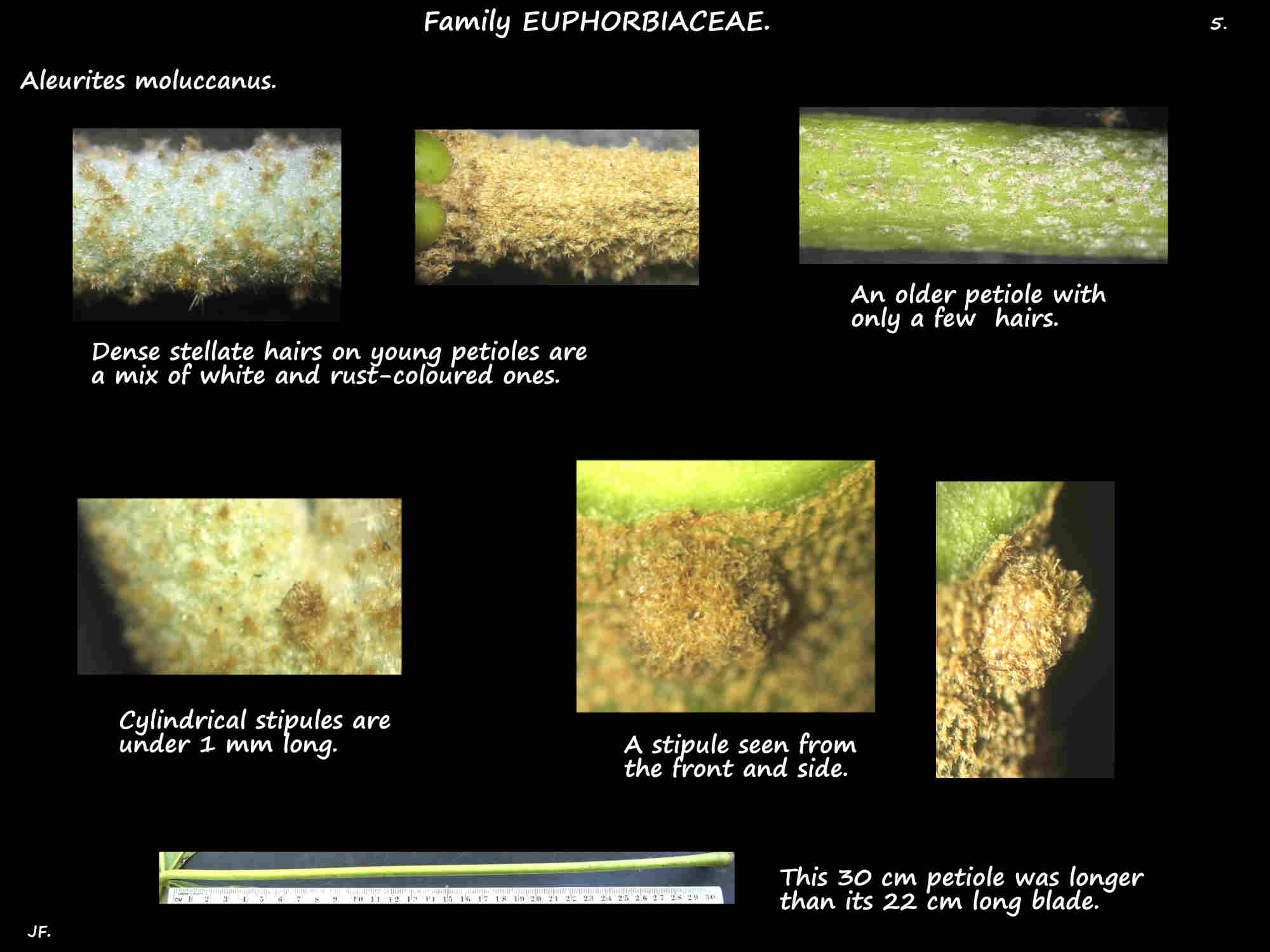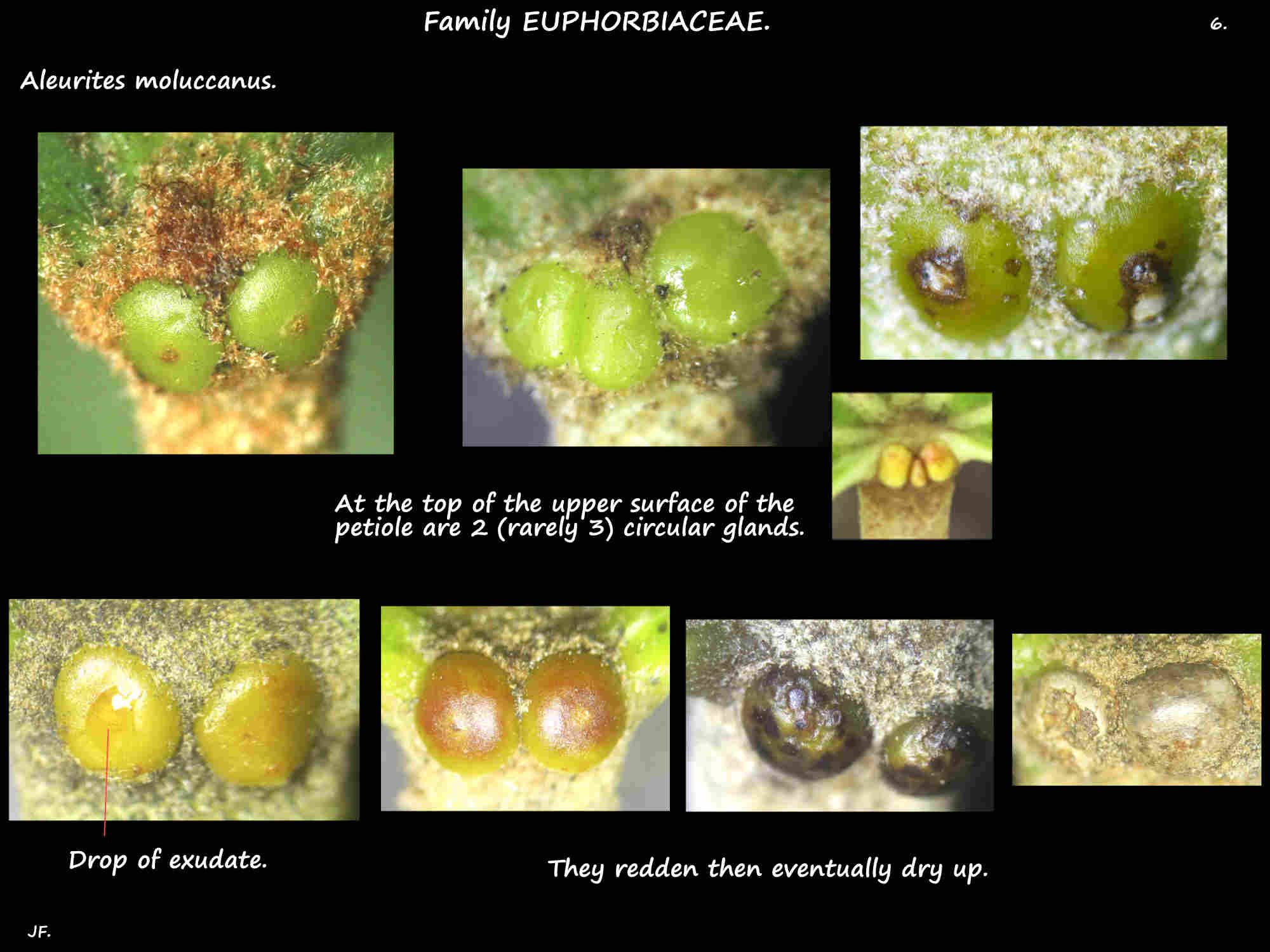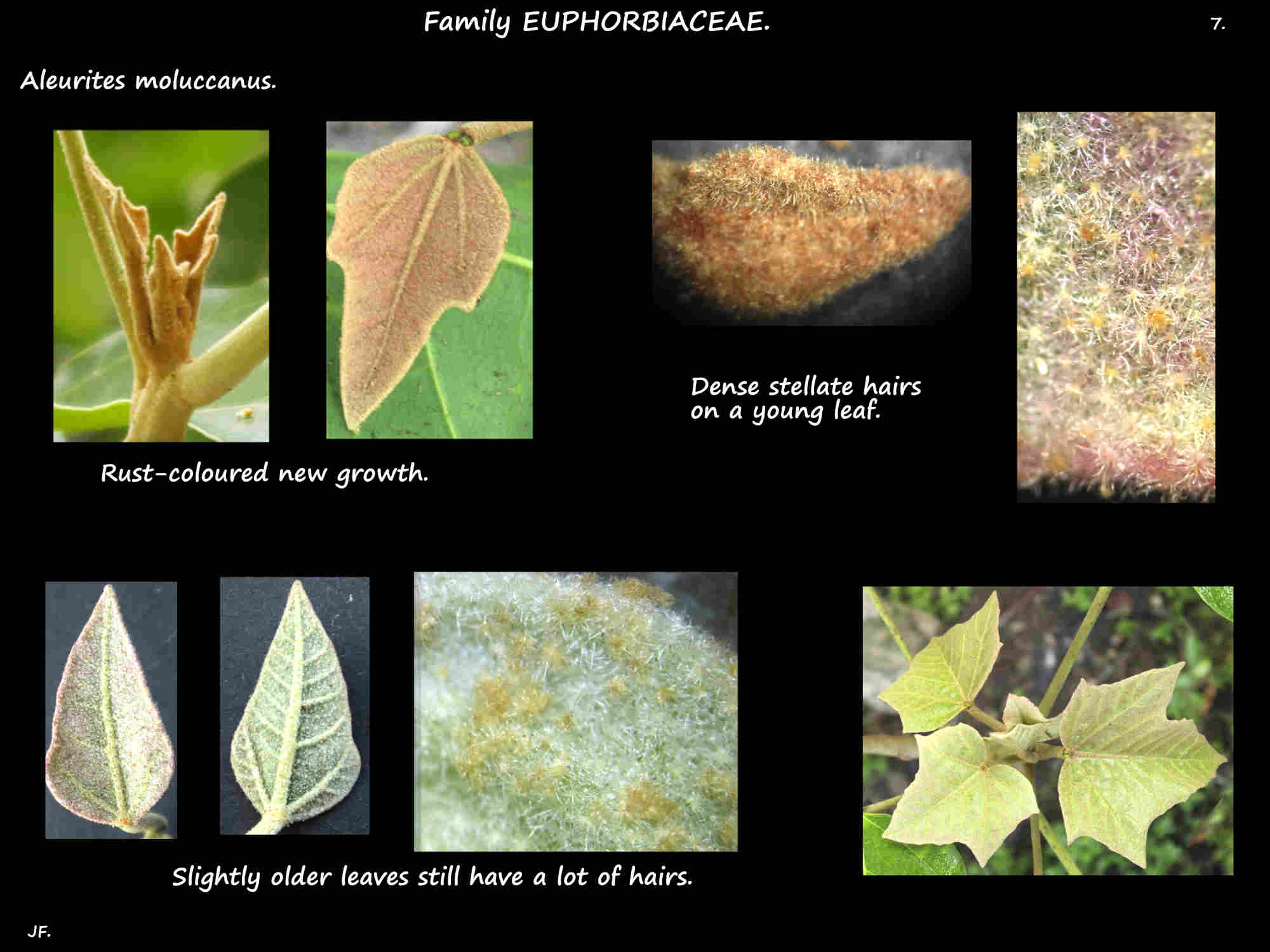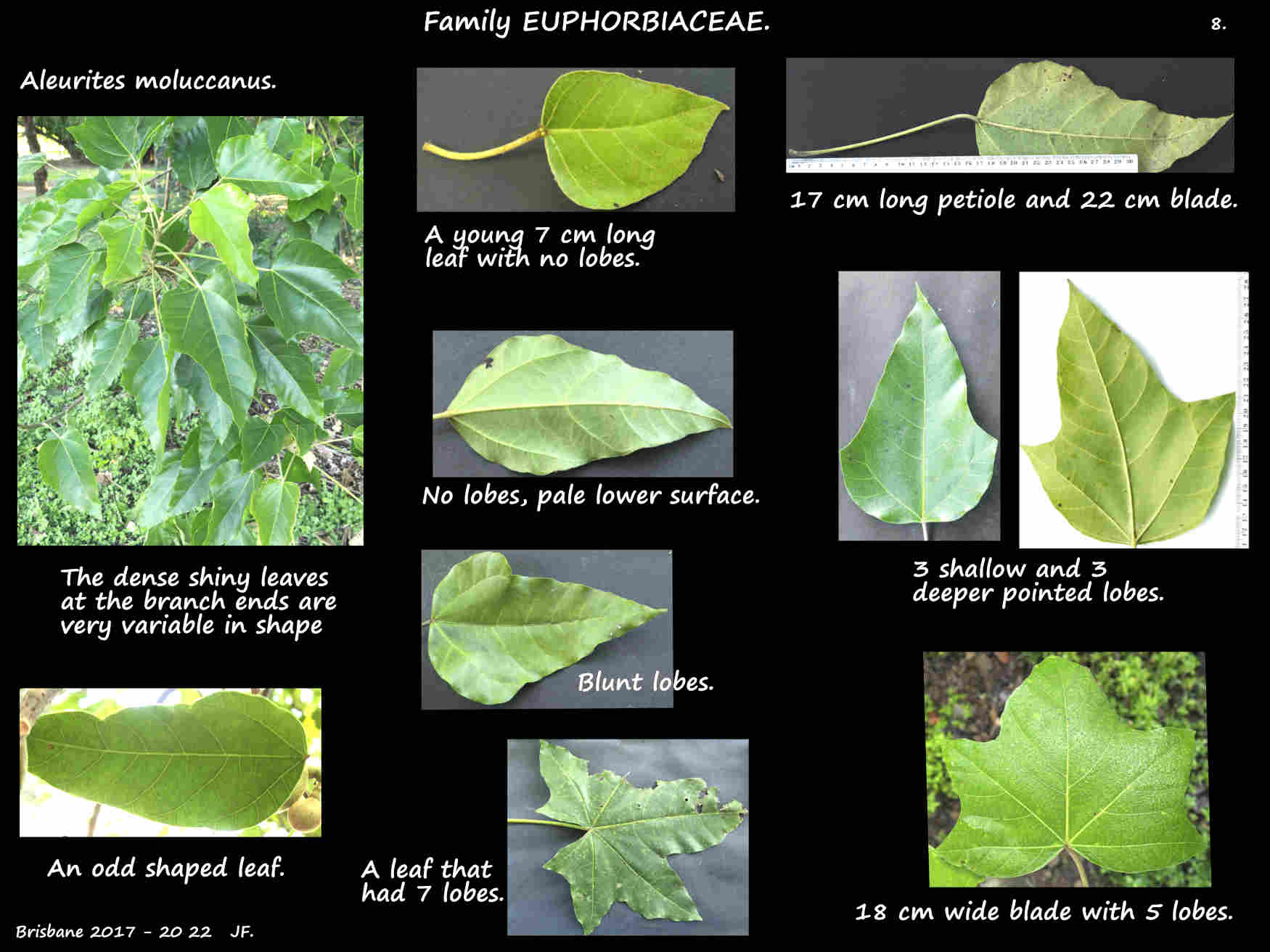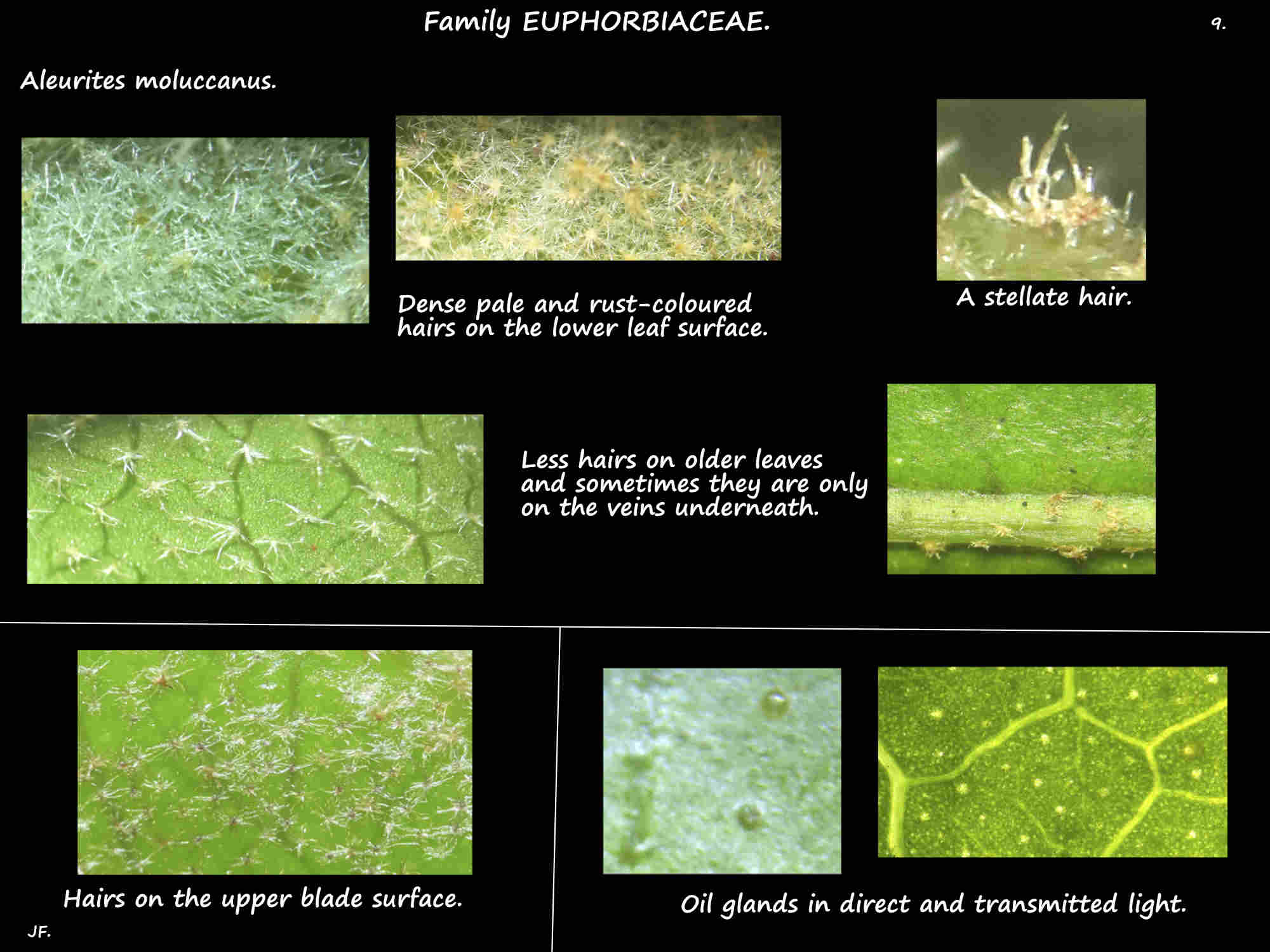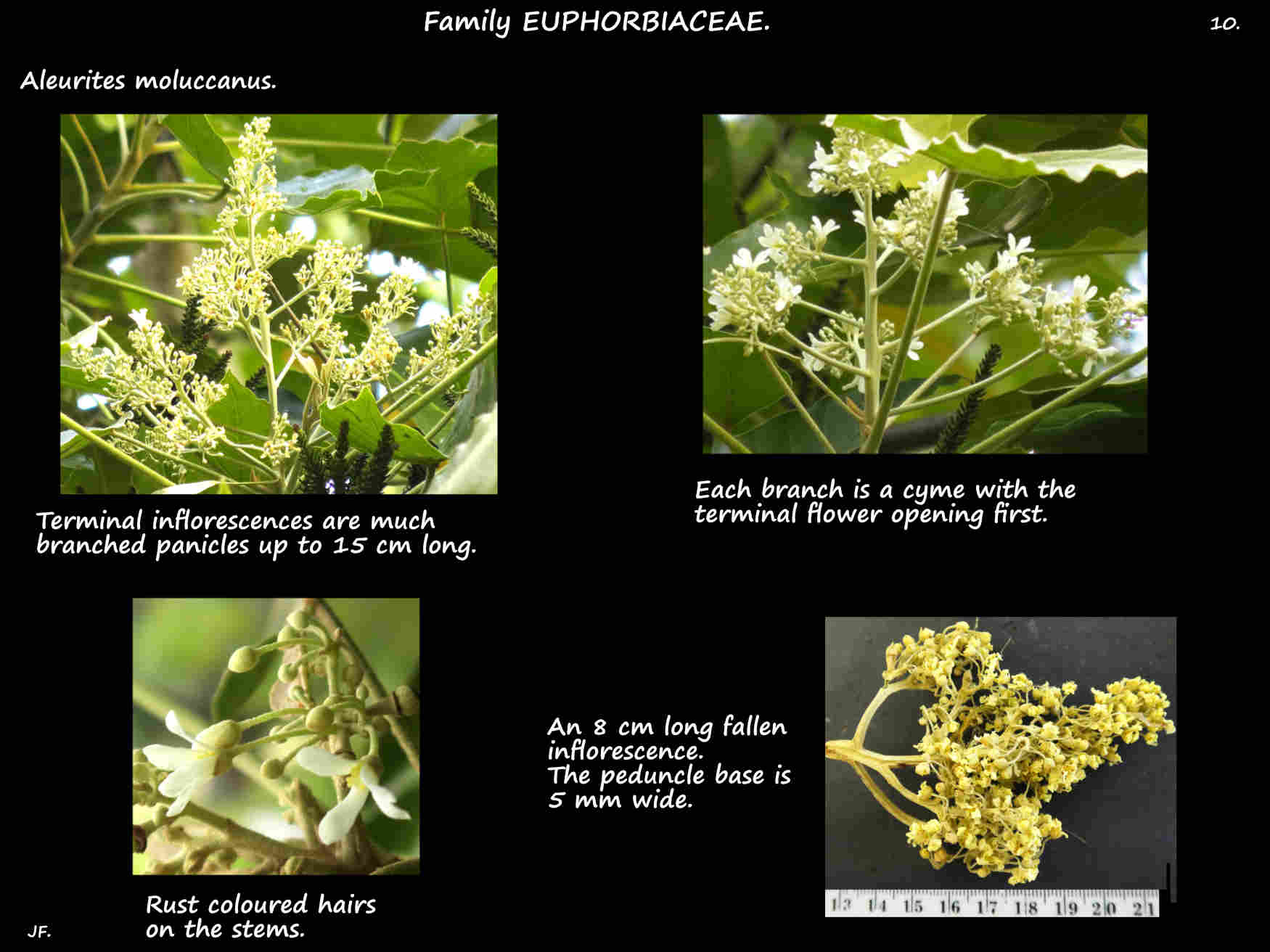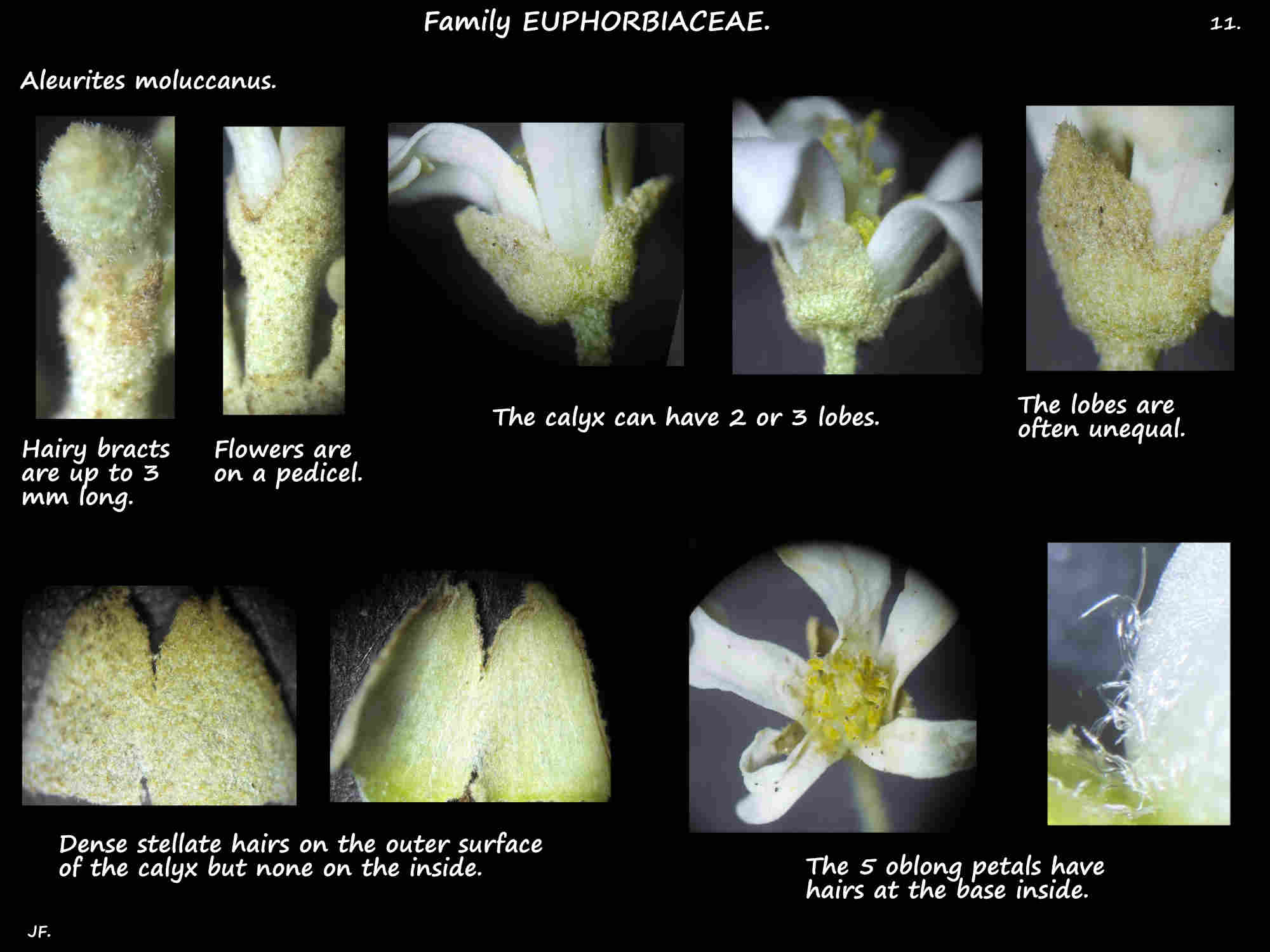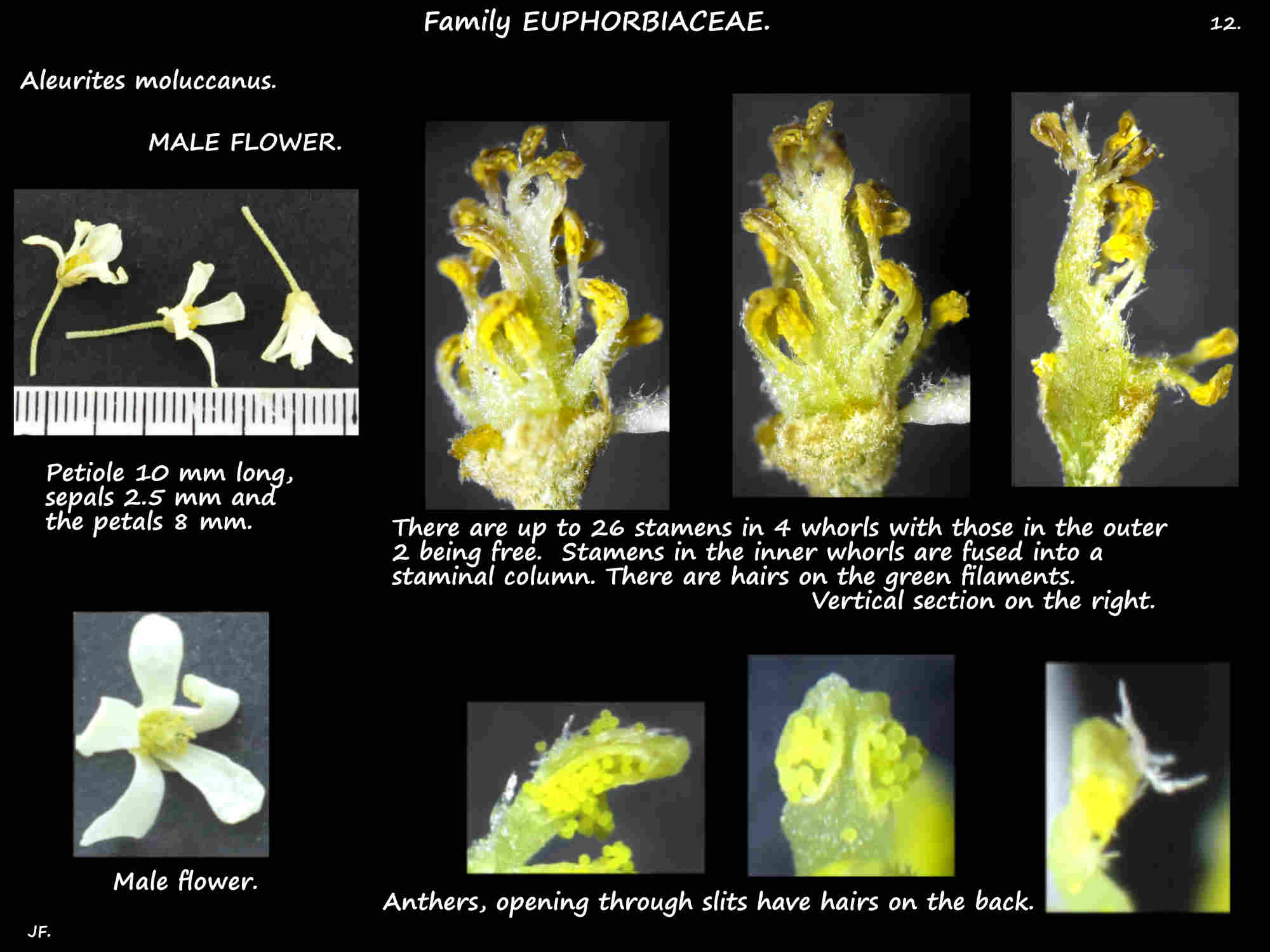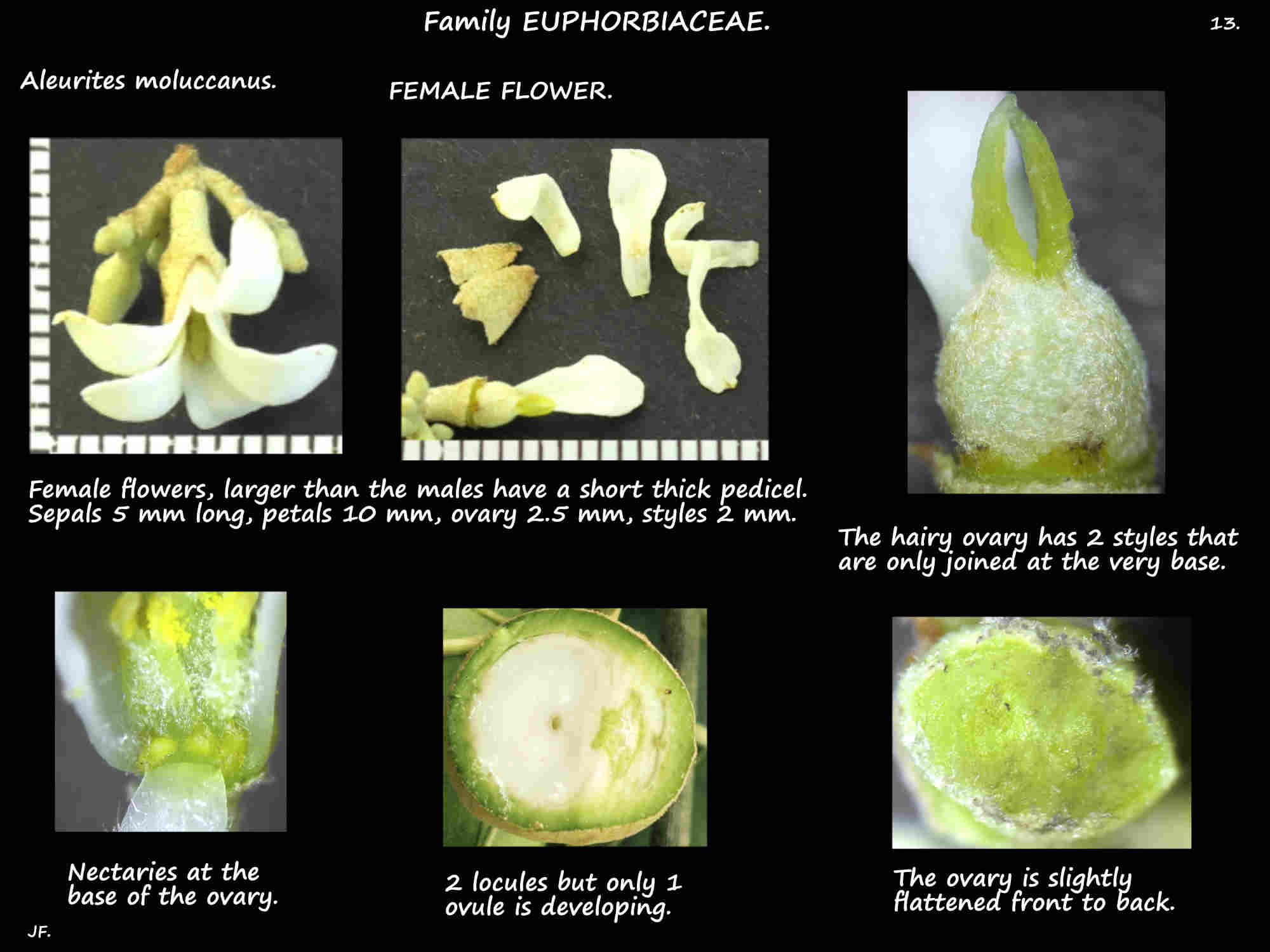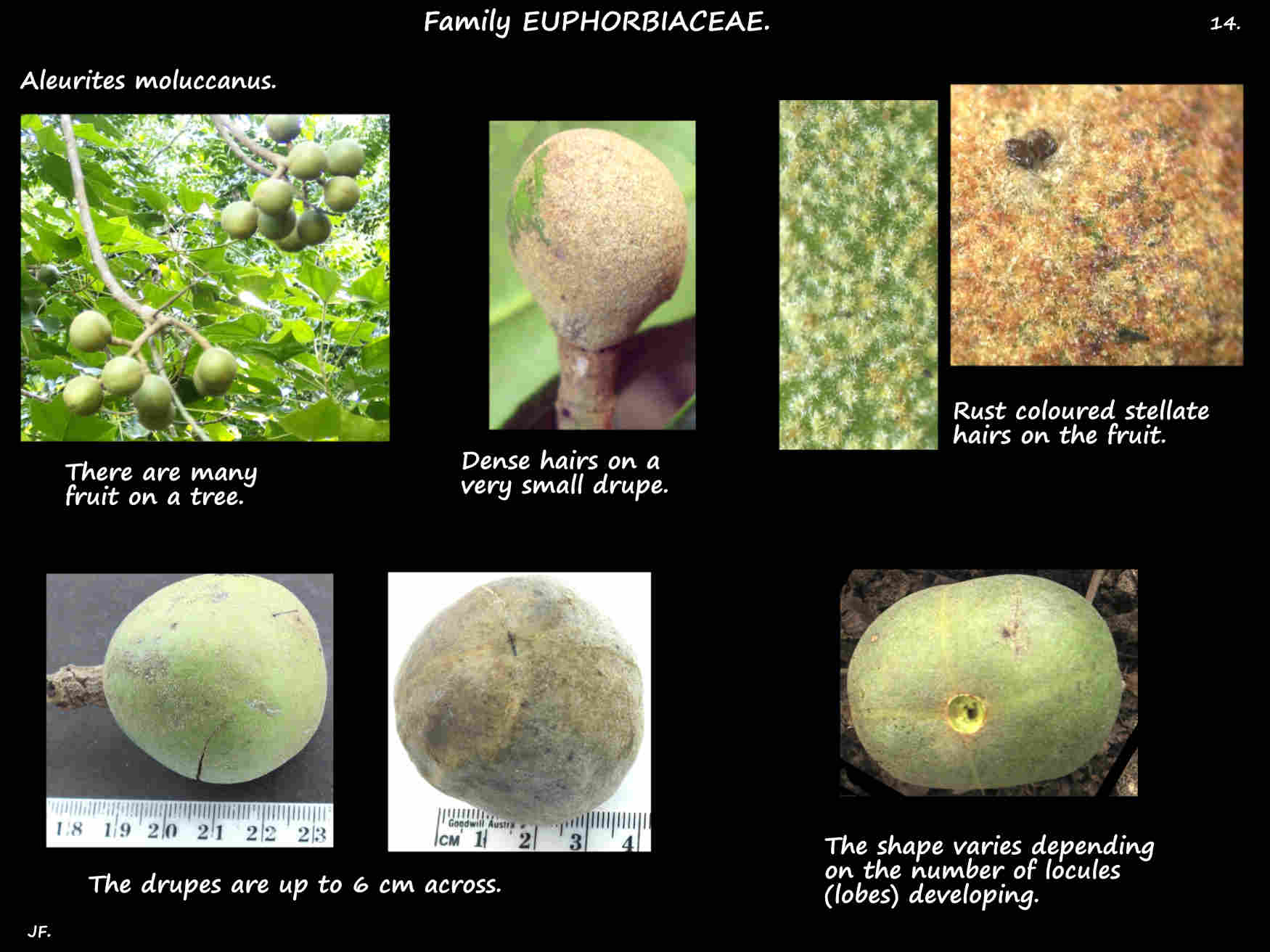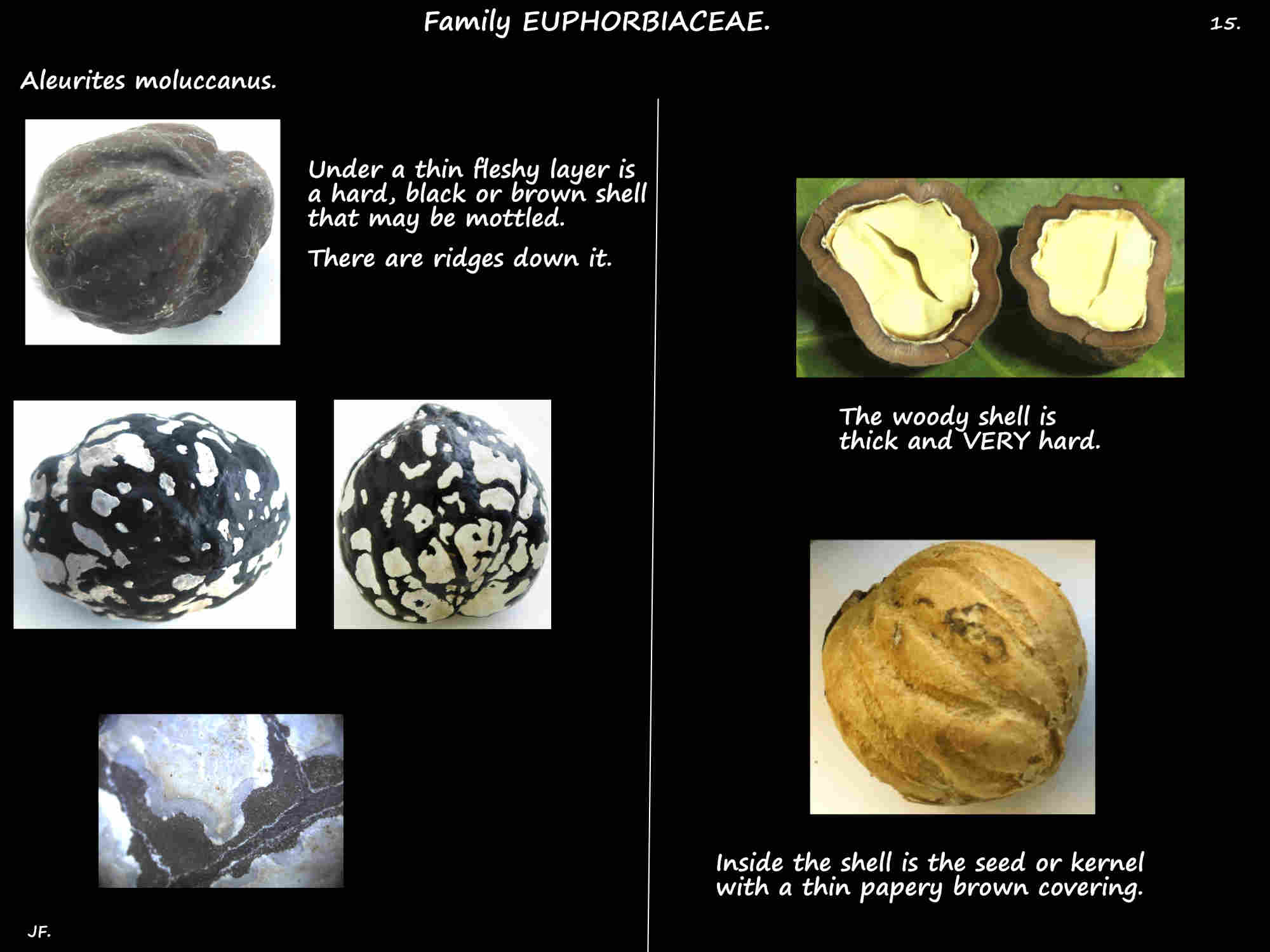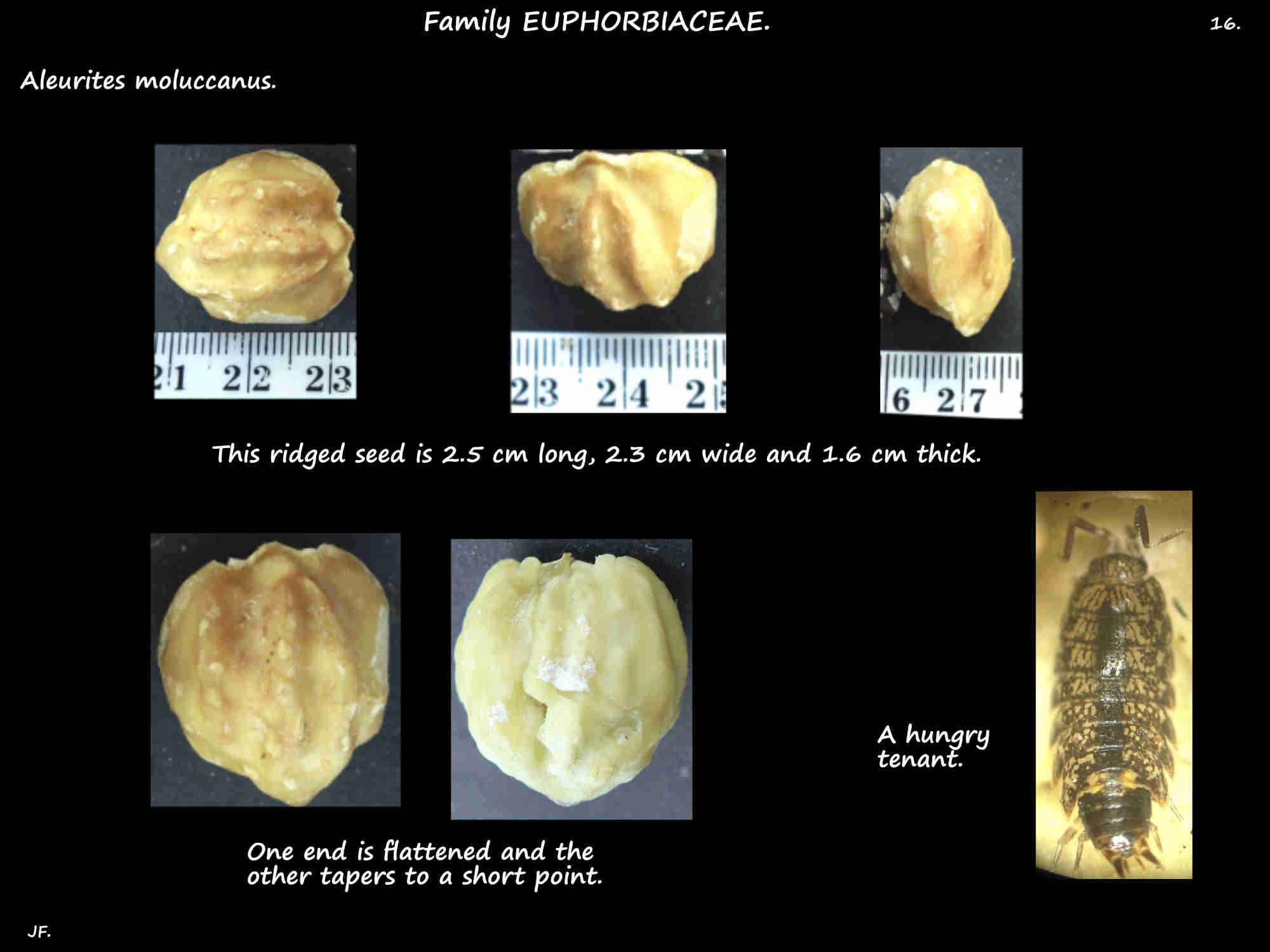Aleurites moluccanus.
There are many synonyms including some with other genus names.
It is often incorrectly seen as Aleurites moluccana.
It and A. rockinghamensis are both commonly known as the Candle nut.
A. mollucanus is grown for the oil in the seeds and sometimes as an ornamental plant.
They are large fast growing, evergreen trees up to 20 or 30 (40) m high.
They usually have a rounded crown and erect to drooping branches.
The smooth grey to brown bark has long vertical fissures with a reddish base.
The dense stellate hairs on young twigs and leaves can be grey, yellowish or rust coloured.
The leaves are alternately arranged in a spiral and concentrated at the branch ends.
The petioles, up to 20 cm or more may be longer than the blades.
There are 2 circular glands on the upper surface of the petiole where it joins the blade.
The rounded stipules, up to 1 mm long fall early.
The simple leaf blades are up to 20 or 30 cm long and can be nearly 30 cm wide.
They are very variable in shape leading to many having been labeled as separate species.
Shapes vary from widely or narrowly ovate to lanceolate or heart-shaped.
The edge may be smooth or have 3 to 5 (7) typically pointed lobes.
The base can be straight, wedge or heart-shaped and it has 5 or 7 veins radiating from it.
Blades are densely hairy when young.
Adult leaves may have no hairs or just a few on both surfaces.
The much-branched conical terminal inflorescences can be up to around 15 cm long.
The base of the peduncle (inflorescence stalk) is less than 5 mm across.
There are bracts up to 3 mm long at the base of the branches.
The branches and bracts have dense pale to rust coloured stellate hairs.
Each inflorescence branch has one or a few female flowers with the majority being male.
The white or cream flowers, on stalks (pedicels) are up to 1 cm long.
Male flowers have a thin pedicel up to 12 mm long with stellate hairs.
The 2 or 3 calyx lobes are 2 to 3.5 mm long and may be unequal.
There are stellate hairs on the outer surface.
The corolla has 5 narrow oblong to oblanceolate petals.
Up to around 6 mm long by 2 or 3 mm wide they have a few hairs inside at the base.
There are around 20 to 25 stamens with green filaments in 4 whorls.
The outer ones, with 1 or 2 mm long filaments are free.
The inner ones, up to 3.5 mm long are fused into a staminal column.
They have some simple hairs and anthers under 1 mm long.
The nectary disc has small lobes and there is no ovary.
The few female flowers are on thicker pedicels that are under 6 mm long.
The calyx lobes and the linear petals are up to twice as long as in the males.
The nectary disc has small lobes.
The roughly spherical ovary is slightly thinner than wide.
It is 2 to 3 mm high, densely covered in hairs and typically has 2 locules.
The 2 styles, around 2 mm long are only joined at the base where there may be a few hairs.
The green drupes, up to 6 cm across vary in shape depending on the number of locules that develop (1 to 4).
There are small scattered brown stellate hairs on the surface.
The drupes have a thin fleshy layer with a seed or kernel in a hard woody shell.
The shell can be black or brown and may be mottled in cream or white.
The pale ridged seeds around 2.5 cm long are slightly wider and slightly thinner than that.
One end is always flattish and the other end tapers to a broad point.
Aleurites rockinghamensis flowers have a longer thicker peduncle and the larger female flowers have a
longer style with more hairs, 3 to 4 locules in the ovary, the seeds are not flattened and
they are a slightly different shape.
J.F.
